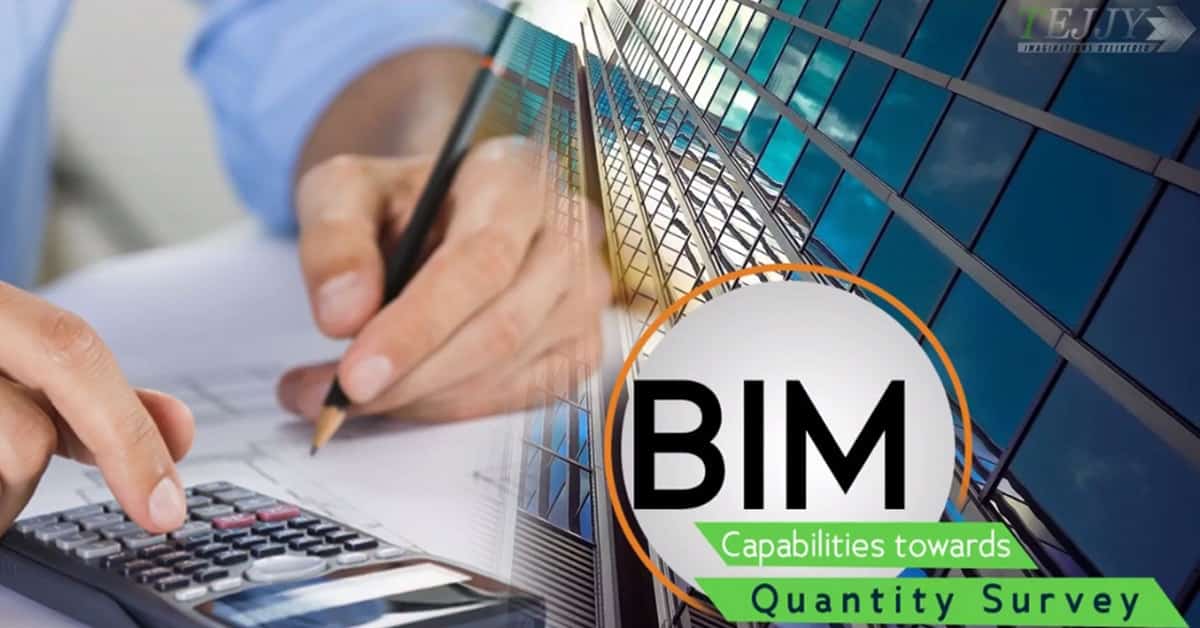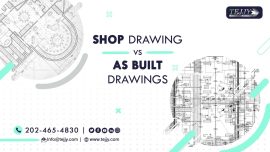
The concept of Building Information Modeling is prevalent since the 1970s. The idea came into reality in the 1980s by computer applications like ‘Graphisoft’, ‘ArchiCAD’ and more. Nevertheless, BIM Services have become more popular in recent decades. BIM constitutes to be a data-rich model in virtual reality consisting of all details, data, as well as physical attributes like dimensions, texture, color, and thermal properties.
But still, Quantity surveyors adoption of BIM is lagging behind as they are unsure of the capabilities of BIM. Building Information Modeling enables Quantity surveyors to analyze the building, material and performance in real time.Quantity surveyors are responsible for the cost estimation, management throughout the entire project lifecycle.
Role of a Quantity Surveyor (QSs) in Construction Industry
The Quantity surveyor is the key person involved in the cost management as his work area includes designing and feasibility stages. The main role of a Quantity Surveyor are:
- Quantification
- Preparation of BOQ(bills of quantities)/BOM(Bills of Materials)/Quantity Take-off
- Estimation and pricing of construction projects.
Traditional quantity surveying practice was performed manually. Excel spreadsheet, 2D CAD (Computer Aided Designing) were a few of the softwares adopted for the manual quantity surveying process. The traditional quantity surveying is a time-consuming task performed manually involving a lot of time and effort. The manual quantity surveying is prone to errors as the process performed is manual affecting the performance. The errors in calculation affected the project cost outcomes leading to unsatisfied clients.
With the help of BIM, we can accelerate the quantification of the building for estimating purposes and for the production of updated estimates and construction planning.
BIM Technology Applies to Various Facets of Construction Including
Building Information Modeling accelerates the entire project lifecycle in an AEC Industry.
- Architectural, Structural & MEP Design
- Constructability Analysis
- Site Logistics Plan
- Construction Scheduling
- Cost Estimates and Quantity Take-offs
- Supply Chain & Delivery of Goods
- Productivity
- Resource Allocation
- Facilities & Asset management (Post Hand-over)
BIM Capabilities Towards Quantity Survey
- Data Visualization
- 5D Lifecycle Cost Analysis
- Bill of Quantity (BOQ) preparation with 3D views
- Project Conceptualization & Design Planning
- Simulation, Cost Control, Value Engineering, Estimating, Tendering
- Drawing Interpretation & Data Extraction
- Reliable Database
- IFC View for BOQ (Bills of Quantity)
- Quantity Take-Off & Cost Estimation
- Estimating & Tendering
- Post Construction Cost Management
- Design Change Identification
- Data Coordination
- Virtual Model & Estimation
- Communication & Access to Information
How BIM is Facilitating Quantity Survey?
- Quantity survey can be associated with the 5th dimension of BIM, which is used to facilitate quantity take off, calculations and measurement directly from a model. Quantity extracted can be directly linked to the cost database. However, the time required by the experts at BIM companies on material quantity extraction varies to a great extent based on projects. As per market research, it is found that 50 to 80% of the time is required to prepare a cost estimate on quantification. Using 5D Revit BIM Modeling Services, one can make accurate cost estimation quickly, saving construction time and cost.
- BIM also helps to identify design modifications from the model, enabling the estimator to authenticate preceding quantities against fresh design and update the quantities automatically. The information provided in the model is consistent with the design. Whenever a change is made in the design, the change is subsequently reflected in all the associated construction documentation and schedules, along with the quantity take-offs and measurements used by the estimator.
- BIM delivers detailed quantities, with the accessibility of geometric properties for building elements to produce accurate quantities, like area and volume. The advantages of BIM can’t be comprehended by the quantity surveyors until the model issued to them are entrenched with the vital information required for automating tasks.
BIM Technologies Supporting Cost Assessment
- Revit
- Navisworks
- Tekla Structure
- Exactal CostX
- Buildsoft Cubit
- Vico
- Innovaya
Cutting Edge of Tejjy Inc. with 4D & 5D BIM Cost Estimation
- Accuracy in 5D BIM construction solution adds value to construction projects
- Augmented value engineering saves project time and cost
- Cloud technology enables better coordination with multi-platform access
- Detailed estimate support all AEC industry professionals
- Automated quantity take-offs with design updates or changes in construction documentation, schedules, take-offs, counts, and measurements.
BIM has given a new dimension to the building environment with its approach to adapt innovativeness and flexibility. Designing, Building, Construction, and Management scope has been redefined with BIM in the AEC industry. Automating the project through the implementation of business information modeling capabilities has concentrated on cost, quality, and time. Production of BIM-enabled BOQ/Bill of Materials has reinvented the job from being tedious to a comforting zone in comparison.
Need to integrate BIM cost estimate in your construction project?
Contact Tejjy Inc. – one of the competent BIM Service Providers in Washington DC, Baltimore, MD, and Virginia at 202-465-4830 or info@tejjy.com for discussing your BIM cost estimation, 3D BIM Modeling Services, and BIM facility management.









